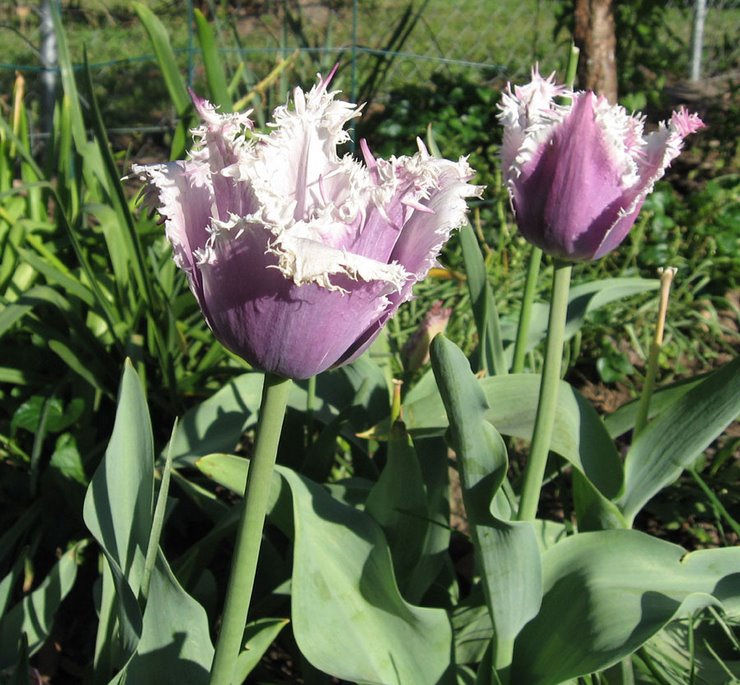This evening when I went out to feed my goldfish, a dragonfly was resting on one of the rocks at the edge. It was not, of course, interested in the fish food, but it was the only critter that came to see what was being offered.
Recently, feeding time at my goldfish pond hasn't been very well attended. I think that we may have been visited by an egret or heron from the river a few blocks away. In the past, when I would come out to the pond, the fish would come eagerly to the surface, just waiting for me to drop food pellets in. Now I've only caught quick glimpses of three fish lurking deeper in the water, though there may be others hiding beneath the water lilies. They aren't eating nearly as much either, so I think that relatively few of the fish are left.
Rather than trying to get more fish, I'm thinking I might like to change my pond population. Maybe instead of a goldfish pond, I could have a dragonfly pond. Both are interesting to watch, both eat larval mosquitoes, but dragonflies (sometimes called mosquito hawks) will eat flying ones as well. In fact, 90% of their diet consists of mosquitoes. Fish and dragonflies don't generally co-exist in the same smaller pond, as fish will eat the larval dragonflies, which live in the water.
Dragonflies have incredible coloring. They are one of the most nimble insect fliers, with the ability to hover and even fly backwards.
Dragonflies, whether adult or juvenile (known as nymphs or naiads) need water. During their larval stage, dragonflies live in the water for a period that may last for two months or up to three years. During their time as a nymph, they go through 10-12 stages (or instars), each times molting their exoskeleton and growing larger. The final larval molt occurs above water. Adult dragonflies are drawn to water to mate and lay their eggs.
The British Dragonfly Society recommends a pond with a diameter of 20 feet, though just about any size will appeal to dragonflies. Water of at least 2 feet in depth is recommended, to allow the nymphs to take cover from predators. They prefer a pond in a sunny spot, sheltered from the wind. It's best to have shallow, sloping sides, with plants growing in and near the water, and flat rocks along the edges. If you don't have room for such a large pond, don't give up. Some people have a water feature in a wooden half-barrel that has become home for damselflies.
Shallow water near the edges of the pond will warm up more quickly in sunlight, which helps the nymphs be more active, with the deeper water in the center offering shelter when needed. A combination of deep water plants such as water lilies give shelter, and taller plants in the shallows such as cattails, rushes or grassy foliage allow young dragonflies to climb out as they grow to adulthood. Dragonflies won't eat the plants, but some species use plants as places to lay their eggs. Ask at a local nursery or extension office to select native plants, as they will be best adapted for local dragonflies' use.
Light-colored rocks give the adults a place to bask in the sun. Taller grass or shrubs near the pond will give the adult dragonflies places to rest. Provide a good hunting ground for your dragonflies by planting a small wildflower meadow near your pond to attract small pollinators.
Place an old log near the pond, and let it rot naturally. Some species will use the log as a place to lay eggs. Be careful not to spray herbicides or pesticides around a dragonfly habitat, or to use a bug zapper, as these will kill the dragonflies.
The smaller relative of the dragonfly is the damselfly. Dragonflies have a stockier body. When at rest, they hold their wings open when at rest, though some tilt their wings slightly forward. Damselflies usually have thinner bodies, and at rest hold their wings together or partially spread.
There are over 300 species of dragonflies in North America alone. Increasingly people are finding them as fascinating to watch as birds and butterflies, and with their voracious appetite for mosquitoes, dragonflies make great neighbors.


1 comment:
A dragonfly pond sounds like a fun thing to try! Sounds like you might have a dining stop for those birds if you keep restocking our pond with those tasty fish.
Post a Comment